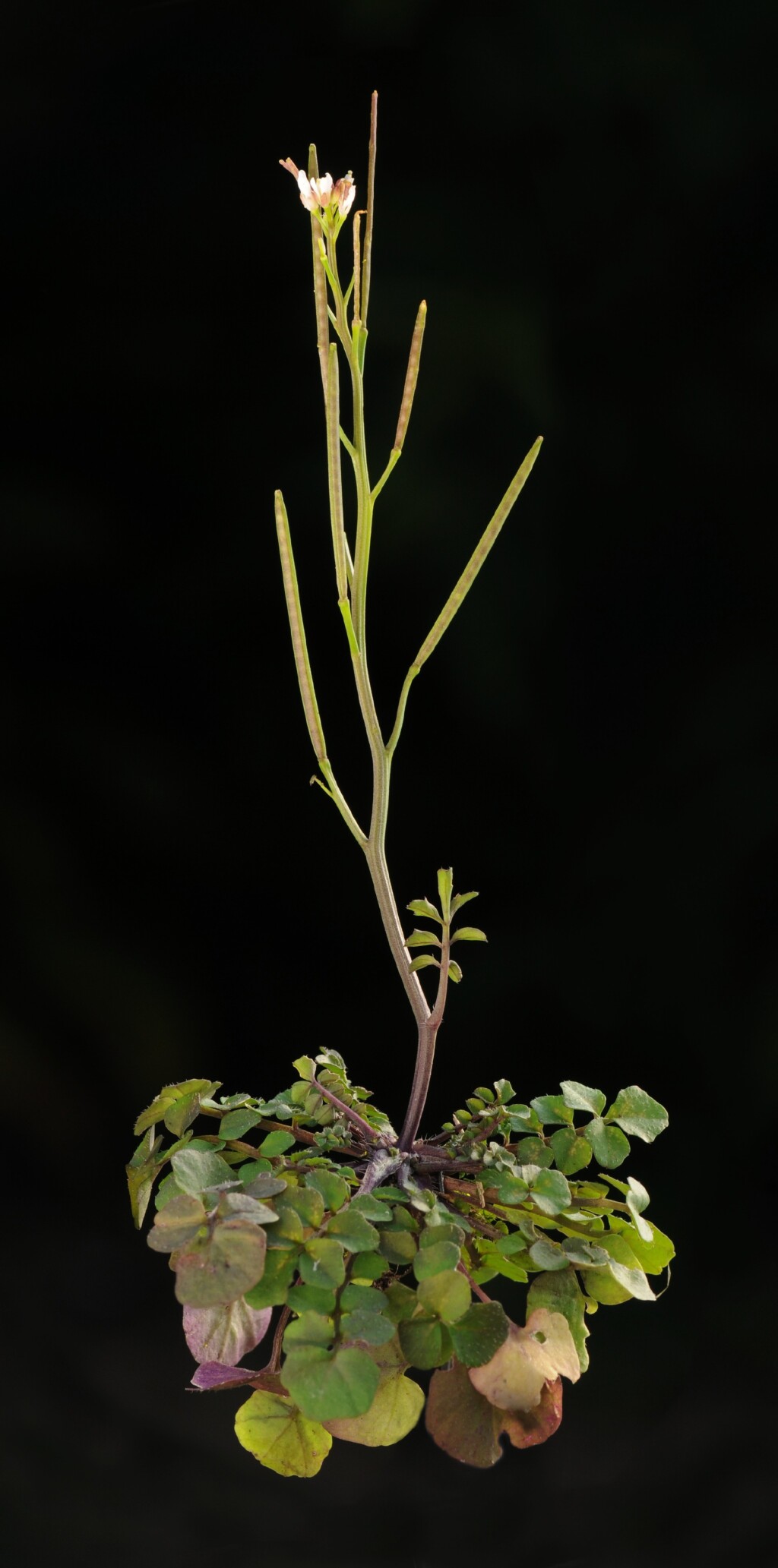Cardamine hirsuta
L. Common Bitter-cressTaprooted annual, to 35 cm high; flowering stems erect, glabrous to very sparsely hairy. Leaves thin with scattered hairs c. 0.2 mm long on the upper surface; basal leaves rosetted, mostly 2–6(–8) cm long, pinnate with (1–)2–4(–6) pairs of lateral pinnae and a larger, commonly reniform terminal leaflet; cauline leaves 0–3(–5) reducing in size towards apex of plant, 1–4(–8) cm long, pinna pairs mostly 1–3, most pinnae slightly angular or lobed. Racemes usually many-flowered; sepals 1.5–2.5 mm long, with a few hairs; petals 3–4 mm long, white; stamens usually 4; mature style c. 0.5 mm long. Fruits inclined at less than 45° to rachis, clearly overtopping open flowers in the same inflorescence, frequently sparsely hairy, 1.5–2.8 cm long; pedicels 5–10 mm long; seeds c. 1.0 mm long. Flowers all year.
MuM, GleP, Brid, VVP, VRiv, GipP, OtP, WaP, Gold, CVU, GGr, DunT, NIS, EGL, EGU, WPro, HSF, HNF, OtR, Strz, MonT, VAlp. All States except NT. Native to much of the Northern Hemisphere. Common weed in the Melbourne area occurring in garden beds, paving cracks and sometimes forming large colonies in lawns; also elsewhere in moist habitats, predominantly in eastern Victoria.
Cardamine hirsuta is generally found in more exposed, drier localities than the similar C. flexuosa. An unusual form has been collected from Metcalfe Flora Reserve near Castlemaine and Paradise Falls near Whitfield. This form does not form a well-developed basal rosette, its leaves have only 1–2 pairs of lateral pinnae, the upper cauline leaf is not markedly reduced compared to basal leaves and the inflorescence is fewer-flowered.
Thompson, I.R. (1996). Cardamine. In: Walsh, N.G.; Entwisle, T.J., Flora of Victoria Vol. 3, Dicotyledons Winteraceae to Myrtaceae, pp. 434–442. Inkata Press, Melbourne.
 Spinning
Spinning




